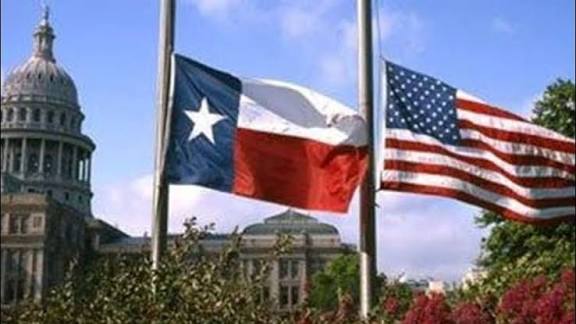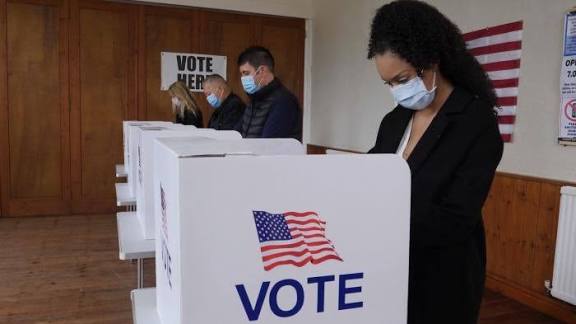Why are flags at half staff: Half mast today in texas,USA flag status today

The Texas flag is flying at full mast today. General instructions on the proper display of the flag. Texas government code dictates statutes. Today we will discuss about Why are flags at half staff: Half mast today in texas,USA flag status today
Why are flags at half staff: Half mast today in texas,USA flag status today
When a flag is flown “at half-staff” (also referred to at sea as “half-mast”), it immediately captures attention. The flag is not at the top of the pole, yet it is not completely lowered — its intermediate position conveys a solemn message. This practice is steeped in symbolism: a public sign of mourning, respect, remembrance, or national distress. In many places, including the United States, lowering a flag to half-staff is a formal ritual governed by protocol. Understanding the meaning, history, and rules behind it helps us read this visual signal correctly.
The Origins and Historical Roots

The tradition of lowering flags as a sign of mourning has long maritime roots. On ships, in past centuries, lowering the flag part way down the mast was a tribute to a deceased captain or to mark a tragic loss at sea. Sailors sometimes described this as making “room for the invisible flag of death” above — a vivid metaphor.
Over time, this maritime custom evolved and was adopted by land-based institutions. In the United States, protocols around flag lowering became more formalized in the twentieth century. Leaders, governments, and military institutions codified when and how the national flag should be lowered, giving the practice a structured and highly visible role in public life. Today, when you see a flag at half-staff on a government building, it is rarely accidental — it is more likely part of a formally declared period of mourning or remembrance.
Why Flags Are Lowered: Key Reasons
There are several common circumstances under which a flag is lowered to half-staff. These include:
Death of a National Leader
When a sitting or former President of a country dies, flying the national flag at half-staff is a powerful tribute. It signals national mourning and respect for the highest office.Death of Other High-Ranking Officials
Beyond presidents, other prominent public figures often trigger half-staff orders. These can include vice presidents, chief justices, speakers of legislative bodies, or other major public servants. The loss of such individuals is often seen as a loss for the whole country or a critical segment of society.State Officials or Local Dignitaries
For a particular state or locality, the death of a governor, mayor, judge, or another beloved local figure may be sufficient to lower flags within that jurisdiction. These orders typically come from the governor or another responsible authority.National Tragedies or Disasters
Sometimes half-staff orders are issued in response to a major tragedy — such as a terrorist attack, a large-scale accident, or a natural catastrophe. Lowering the flag expresses solidarity with victims and the collective grief of a nation or community.Memorial or Commemorative Days
There are certain designated days of remembrance when flags are routinely lowered. For example, in the U.S., on Memorial Day, flags are flown at half-staff until a certain hour to honor military personnel who died in service. Similarly, other special days may prompt momentary or scheduled half-staff observances.
Each of these reasons underscores the role of flags as symbolic vessels — they do not just flutter in the wind, they communicate collective sentiment and shared loss.
Protocol and Etiquette: What “Half-Staff” Really Means
Lowering a flag is not done haphazardly. There is a well-defined protocol to ensure respect and decorum. Here are some of the important guidelines:
Raising First, Then Lowering
The proper method is first to raise the flag briskly to the peak of the pole, and then lower it slowly to the half-staff position. This sequence shows deliberate respect.Position on the Pole
Exactly how “half-staff” is defined can vary. In some traditions, the top edge of the flag should be about one flag-width below the top of the staff. Others use the literal midway point. What matters most is dignity in the flag’s placement, rather than rigid uniformity.End of the Day or End of Mourning Period
When the period of mourning is over — whether that’s at sunset or after a number of days — the flag is raised again to full height, and then lowered for the day. This mirrors the opening gesture, but in reverse order.Duration Varies by Event
How long a flag remains at half-staff depends on the nature of the event. For example, when a major national leader dies, the half-staff period may last weeks. For other officials or local tragedies, it may be just a single day or until the official memorial service concludes.
Terminology: Half-Staff vs. Half-Mast
There is a subtle distinction in terms:
Half-mast is the correct phrasing at sea, referring to lowering a flag on a ship’s mast.
Half-staff is used on land, referring to lowering a flag on a pole.
In practice, many people use the terms interchangeably. However, precision matters in formal or historical contexts: “mast” for maritime, “staff” for terrestrial settings.
Legal Basis and Flag Codes in the U.S.
In the United States, the practice of flying the flag at half-staff is guided by codified rules. Federal law provides for the use and display of the “Stars and Stripes,” and outlines how, when, and why it should be lowered in certain scenarios.
Government agencies — particularly at the national level — follow these legal requirements. Additionally, presidential proclamations may direct the lowering of flags across federal properties. State governments, in turn, can issue their own orders for their state flags. Governors often have the authority to declare half-staff periods on all state-owned buildings for state-level events or memorials.
Thus, the practice is not purely symbolic but is embedded in formal governance structures. It is not left to ad hoc decisions unless empowered authorities explicitly declare it.
The Case of Texas: Flag Status and Recent Practice
To understand how half-staff practices play out in a specific place, we can examine Texas.
Current Flag Status in Texas
As of today, the Texas flag is at full staff. There is no active statewide proclamation ordering the flag to be lowered to half-staff. When such a proclamation is in force, it is typically issued by the governor, and public communications will reflect that status change.
Why the Texas Flag Is Sometimes Lowered
When the Texas flag is flown at half-staff, it usually happens for one of a few reasons:
Governor’s Proclamation
The Governor of Texas may order flags to half-staff to honor the death of a notable state figure — such as a former governor, judge, or public servant. Such orders are made through formal proclamation and are observed across state buildings.National Directives
Sometimes, a national order (issued by the President or a federal agency) to fly U.S. flags at half-staff applies, and Texas may follow suit for its own flags. This can happen in response to a national tragedy or the death of a high-profile national leader.Commemorative Days
On certain days of remembrance, Texas may lower its flag to half-staff in solidarity or observance. These days can be specific to Texas history or align with broader national memorial days.Local Observances
Beyond the governor’s orders, local governments (cities or counties) may decide to lower flags in their jurisdictions to honor local figures or tragedies. Thus, you might see a flag at half-staff in one town in Texas while another nearby town’s flags remain at full height.
Why People Sometimes Get Confused
There can be confusion when you spot a flag at half-staff in Texas, because:
It may only be one building (local or state), so the sight is not uniform across all flags.
The proclamation might be temporary, lasting just a few hours or until a specific event.
Local media or social media may talk about it, but the reason might not be reported immediately or clearly.
People may not be aware of where to check official proclamations for flag status.
In some cases, the visual cue of a lowered flag prompts questions: “Who died?” “What’s the significance?” Because the act is symbolic, it serves as a prompt for collective awareness and reflection.
What Does It Mean When the Flag Is at Full Staff?
When a flag is at full staff — that is, flown at the top of the pole — it typically indicates that there is no current mourning or formal memorial order in effect, unless a proclamation has ended. It means that, at least for now, the flag is being flown in its normal, standard position. This is a neutral or celebratory posture, rather than a symbolic gesture of grief.
In the context of Texas today, the full-staff status means there is no ongoing statewide request to lower the flag. However, this does not preclude local exceptions; individual municipalities or institutions may still be observing half-staff for reasons specific to them.
Broader Significance: Why This Practice Matters
Why should people care about whether a flag is at half-staff or full-staff? There are several compelling reasons:
Public Symbolism of Mourning: A lowered flag is a visible and collective way for a community — whether national, state, or local — to recognize loss. It helps people unite in sorrow, even if they did not know the deceased personally.
Civic Education: Observing flag etiquette can deepen civic awareness. When people see a half-staff flag, they may be prompted to learn more about the proclamation, the person being honored, or the tragedy being acknowledged.
Sign of Respect: Lowering the flag shows that a place or institution takes the event seriously. It is not just a bureaucratic requirement — it is a gesture that carries emotional weight.
Consistency in Protocol: Having formal rules ensures that the gesture is not arbitrary or inconsistent. Official protocols help maintain dignity, and they prevent misuse or misunderstanding.
Solidarity: In times of tragedy, a lowered flag signals solidarity. Whether the loss is national or local, this practice helps communicate that people are not alone in their grief.
Common Questions and Misunderstandings
Here are some frequently asked questions about flags at half-staff, along with clarifications:
Q: Does a lower flag always mean someone died?
Not necessarily. While death is a very common reason, flags may also be lowered in response to major tragedies, disasters, or symbolic commemorative days.
Q: How long does the half-staff period last?
It depends. For major national figures, it may last weeks; for less prominent officials or local events, it may last just a day, or until a funeral or memorial service. The specific duration is often set by the authority issuing the proclamation.
Q: Can private citizens lower their flags?
Yes — private individuals who fly flags can choose to lower them in solidarity. While official orders apply to government buildings first, individuals may also adhere to etiquette if they wish.
Q: Does the exact “half” position matter?
There is some variation in practice. Some traditions say the top edge of the flag should be one flag-width below the top of the pole; others use the literal halfway point. The priority is a respectful and deliberate placement rather than rigid precision.
Q: How do people find out why a flag is at half-staff?
Often, announcements come through government communications: proclamations by governors, press releases, or dedicated flag-status webpages. Local media may also cover the reason, especially for high-profile or tragic events.
The Process of Proclamation: How Half-Staff Is Ordered
When a decision is made to fly a flag at half-staff, there is usually a formal proclamation process:
Authority Issues Order
The proclamation is typically issued by a relevant authority — for national flags, that could be the President; for state flags, the governor; for local buildings, a mayor or county executive.Public Declaration
Once the proclamation is made, it is communicated publicly: via government websites, official press statements, or notices to government agencies.Implementation
Flag-bearing institutions (government buildings, military installations, etc.) follow the order. They lower their flags accordingly, following protocol for raising and lowering.Duration
The proclamation defines how long the flag stays at half-staff — it could be a fixed number of days, until a particular event, or until sunset on a given day.Conclusion
When the period ends, the flag is raised back to full staff in the formal sequence (first to the top, then lowered for the day), thus completing the ritual.
Why the Practice Has Enduring Relevance
In a rapidly changing world, the half-staff gesture remains powerful. Here’s why it continues to matter deeply:
Emotional Resonance: A lowered flag immediately evokes a sense of gravity. Even without words, it communicates that something significant and solemn is happening.
Unity: The act of lowering flags is a unifying practice. Whether it’s a local leader’s death or a national tragedy, shared observance helps bring people together in mourning and reflection.
Institutional Memory: Through proclamations and repeated practice, societies build a collective understanding of grief and respect. These rituals become part of institutional memory.
Educational Value: For younger generations or those unfamiliar with flag protocols, seeing a flag at half-staff can inspire curiosity and lead to learning about history, civics, and symbolism.
Cultural Continuity: The tradition connects us to the past — to maritime practices, old military customs, and historical moments of grief. It reminds us that some expressions of respect are timeless.
Conclusion
Flying a flag at half-staff is not simply a matter of lowering a piece of cloth; it is a deeply symbolic act of respect, mourning, and shared sentiment. Whether in the aftermath of a tragedy, the death of a public figure, or on a day of remembrance, the lowered flag speaks volumes.
In Texas today, the flag is observed at full staff, meaning there is no current statewide directive to lower it for mourning. But that does not diminish the significance of the ritual: when a half-staff proclamation does come, it will serve as a clear, visible reminder of loss, unity, and respect.
By understanding the history, protocol, and meaning behind half-staff practice, we become more attuned citizens — able not only to notice this gesture, but also to appreciate the collective values it expresses.
How useful was this post?
Click on a star to rate it!
Average rating 0 / 5. Vote count: 0
No votes so far! Be the first to rate this post.
About the Author
usa5911.com
Administrator
Hi, I’m Gurdeep Singh, a professional content writer from India with over 3 years of experience in the field. I specialize in covering U.S. politics, delivering timely and engaging content tailored specifically for an American audience. Along with my dedicated team, we track and report on all the latest political trends, news, and in-depth analysis shaping the United States today. Our goal is to provide clear, factual, and compelling content that keeps readers informed and engaged with the ever-changing political landscape.




